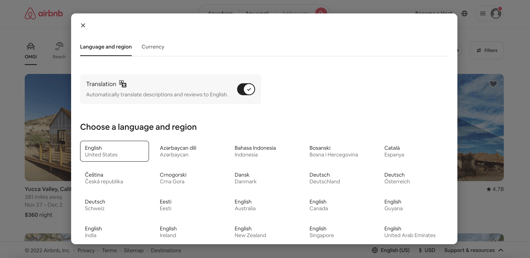An Exceptional Transnational Strategy to Jumpstart Your Global Expansion (with 6 Examples)

.png?width=1017&name=GX%20Blog%20Header-%20EX%204%20(1).png)
Your company has probably mastered your customer journey…in English. But what about your global customers who don’t speak English as their first language? Are their experiences on par with those within your borders?
If the answer is no, your brand needs a transnational strategy to improve the customer experience.
What is a Transnational Strategy?
A transnational strategy is a business plan that aims to coordinate global activities and operations across international borders. Oftentimes, this strategy invests in international operations and assets, connecting global customers to its brand in every operating region and market.
Transnational strategies are typically implemented by large enterprises with different offices and locations across global markets. Naturally, this requires a strategic balance between efficiency and adjusting for local preferences within each unique country. A successful transnational strategy must meet two essential criteria:
-
Global integration of streamlined systems, operations, and management between headquarters and local subsidiaries.
-
Local customer experiences that are based on a deep understanding of the local language, culture, behaviors, and more.
A transnational strategy builds scalable workflows and processes that can be replicated in different markets, while also maintaining local relevance and authenticity. Together, these two factors can build a seamless and consistent experience for each and every global customer — no matter where they live or what language they speak.
Below are some examples of companies who have successfully jump started global expansion by thinking globally, and acting locally:
Example 1: Adidas
Operating in over 150 countries, Adidas is a major global leader in athletic sportswear and shoes. Adidas’s approach to a globally integrated, yet locally curated strategy is key to generating multi-million channels of pipeline from customers all around the world. The company not only co-creates shoe designs with local artists, but also personalizes them depending on a city’s climate and popular activities.
For example, since London experiences rain year-round, local customers can find waterproof sneakers designed to meet their typical needs. And while the shoes may differ from region to region, the company’s emphasis on sustainability stays the same. Wherever the brand goes, its shared commitment to sustainability goes with them—in every global office, retail store, and distribution center.
Example 2: UnitedHealth Group
The UnitedHealth Group (UHG) provides medical and dental benefits to over 7.7 million people in 125 countries. The company focuses on a transnational strategy that prioritizes the patient experience by working with local insurance companies to provide products based on the region’s infrastructure, culture, and needs.
Modeling after each market’s healthcare system, UHG is able to create personalized medical plans, provide locally competitive employee benefits, and build relationships with local pharmacies and medical providers to optimize successful patient outcomes. UHG is also making efforts to create regional innovation centers, focused on local programs, models, and technologies to create exceptional employee experiences for their users.
Example 3: Kentucky Fried Chicken
Kentucky Fried Chicken’s (KFC) transnational strategy is one of the best in the fast food industry. KFC’s global success can be attributed to its strategic approach to partnering with local supply chains and market experts. These partnerships not only drive down costs, but also establish relationships with local companies to better understand international customers.
While customers can find a KFC in 145 countries and territories around the world, they’re unlikely to find two menus that are exactly the same. This is because KFC uses many local ingredients in its products, and caters its menu to fit with local dietary preferences and customs. For example, knowing that 42% of all Indian households are vegetarian, KFC has a customized menu in India with vegetarian items, such as the Veg Zinger.

Credit: Kentucky Fried Chicken
Example 4: Riot Games
Today, Riot Games operates in 20 global locations and captivates over 180 million global players per month. Headquartered in Los Angeles, California, Riot Games embraces a transnational strategy at every stage of its content and development process.
Across character sketches, special effects, in-game voiceovers, and countless personalized details, Riot Games takes extensive time and resources to build high-end gaming experiences for every global player. The company takes its global strategy and processes to adapt the gaming experience at a local level. From UX to behavioral animations, Riot Games takes cultural sensitivity and societal norms into consideration. For instance, since Chinese regulations don’t allow games to show realistic-looking blood, Riot Game designers had to change the color from red to black for their characters and animations.
Example 5: Nestlé
Nestlé is the world’s largest, most diversified food and beverage company. Currently, they sell 2,000 products and brands in 186 countries. From sourcing, production, and marketing, Nestlé leverages a transnational strategy that is customer-centric and locally supported. In fact, Nestlé gives autonomy to local branches to make important decisions, such as pricing and distribution.
And while all global Nestlé products must adhere to the same quality standards and guidelines, many local products differ in ingredients, product names, packaging and more. For example, when launching KitKats in Japan, Nestlé introduced a new line of popular flavors, such as edamame soybean and matcha green tea, that were an instant hit with their local Japanese customers.
Example 6: Airbnb
Localized in 62 languages and virtually accessible in 220 countries, Airbnb is one of the biggest players in the hospitality industry. The key to Airbnb’s global success is its transnational strategy. Airbnb approaches each new market with curated content, features, and services based on a deep understanding of local communities and cultures.
In other words, its platform is always global-ready. When the user selects a destination within the platform, Airbnb immediately customizes the experience with must-see attractions, restaurants, and events based on the location selected. The company is able to accomplish a personalized customer experience while also maintaining consistency at a global level.

Credit: Airbnb
Conclusion
In today’s digital age, the best transnational strategies are those that leverage data and AI technology to know when and what countries to invest in. And if you’re struggling to figure out where and how to start, you’re not alone. Building out a cohesive and streamlined transnational strategy is no easy feat — it requires strategic investment in time, resources, and technology.
However, our market and global experience strategy experts are ready to help. Offering translation and localization services for over 300 of the most popular spoken languages, Lilt can help you get started on a transnational strategy that holds an incredible advantage over your competitors.



